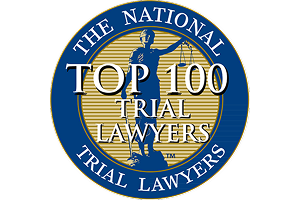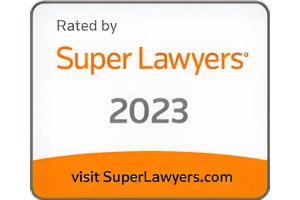Fee Agreements – Limiting time in which Legal Malpractice claims may be brought
Arbitration Provisions in Fee Agreements May Extend Exposure Time in Defending Legal Malpractice Claims
As a sole practitioner or an attorney in a small law firm, one’s time is usually consumed with managing the practice, and attorney-client fee agreements aren’t typically reviewed and revised each time a new case comes into the office. Once the fee agreement is thoughtfully drafted and used in a law practice, the agreement tends to not get much attention. Like any well-drafted contract, an attorney-client fee agreement provides an opportunity to address all of the potential issues that may arise between the parties.
1. The Attorney-Client Fee Agreement
The essential requirements of a contingency-fee based attorney-client fee agreement are set forth in California Business and Professions Code Section 6147. Business and Professions Code Section 6147 requires a contingency-fee based contract to be in writing, and to include a statement of the agreed-upon contingency fee rate. In addition, the agreement must include a statement as to how disbursements and costs incurred in connection with the prosecution or settlement of the claim will affect the contingency fee and the client’s recovery, as well as a statement as to what extent, if any, the client could be required to pay the attorney for related matters that arise out of their relationship not covered by their contingency fee contract. The attorney must provide the client with a copy of the fee agreement at the time the contract is entered into, which is to be signed by both the attorney and the client.
Business and Professions Code Section 6147 further provides that the fee is not set by law, and is negotiable between the attorney and client, however California Rules of Professional Conduct Rule 4-200 prohibits a member of the State Bar from entering into an agreement for, charging, or collecting an illegal or unconscionable fee. In addition, Business and Professions Code Section 6146 addresses the limitations on what may be collected in a contingency-fee for medical malpractice cases. In determining whether a fee agreement is unconscionable or not, all of the facts and circumstances must be considered, including: 1) the amount of the fee in proportion to the value of the services performed; 2) The relative sophistication of the member and the client; 3) The novelty and difficulty of the questions involved and the skill requisite to perform the legal service properly; 4) The likelihood, if apparent to the client, that the acceptance of the particular employment will preclude other employment by the member; 5) The amount involved and the results obtained; 6) The time limitations imposed by the client or by the circumstances; 7) The nature and length of the professional relationship with the client; 8) The experience, reputation, and ability of the member or members performing the services; 9) Whether the fee is fixed or contingent; 10) The time and labor required; and 11) The informed consent of the client to the fee.
2. Attorney-Client Disputes
While there are requirements as to what a fee agreement must contain, generally, there is no true guidance addressing what a fee agreement should include regarding the resolution of disputes with a client. The Mandatory Fee Arbitration Act (“MFAA”) was enacted in 1978 in an attempt to alleviate the disparity in bargaining power in attorney-client fee disputes. Business and Professions Code Section 6200, et seq. The policy of the MFAA is to protect the client by providing an effective inexpensive remedy to the client, which presumably would not require the hiring of a second attorney. See Law Offices of Dixon R. Howell v. Michael W. Valley (2005) 129 Cal.App.4th 1076, 1086-1087. The MFAA, however, applies to disputes regarding fees and costs, and does not apply to affirmative claims against the attorney based upon alleged malpractice or professional misconduct. Evidence relating to claims of malpractice and professional misconduct is admissible in the fee arbitration, only to the extent that those claims bear upon the fees, costs, or both, to which the attorney is entitled. Business and Professions Code Sections 6200(b)(2), 6203(a). Business and Professions Code Section 6201 requires the attorney to provide written notice of the client’s right to arbitrate a fee dispute. The client’s failure to then request arbitration within thirty (30) days after receipt of the notice is deemed a waiver of the client’s right to arbitrate the fee dispute. Naturally, the very existence of a fee dispute is indicative of a breakdown in the attorney-client relationship. Whether or not there is a legitimate basis to pursue a legal malpractice claim, a client who is being pursued for unpaid fees will typically retaliate with a claim of professional negligence. In an effort to curb legal malpractice claims, it is good practice to provide written notice of a client’s file closure, even where outstanding fees require continuing to correspond with the client over payment. If the client has waived the right to arbitrate and the attorney wishes to file a lawsuit against the client for fees, it is wise to wait until the statute of limitations for a legal malpractice cause of action has expired. California Code of Civil Procedure Section 337 provides for a four-year statute of limitations in which a cause of action for breach of contract may be brought. Though many disgruntled former clients may find this scenario unjust, there can be a period of three years in which the attorney can sue the client for fees and-or costs, but the client has lost the right to seek affirmative recourse against the attorney for professional negligence.
The statute addressing legal malpractice, CCP Section 340.6, provides for a one-year statute of limitations after a plaintiff discovers, or through reasonable diligence should have discovered, the facts constituting the wrongful acts or omission of an attorney. Notwithstanding discovery, CCP Section 340.6 imposes a maximum four-year statute of limitation from the date of the wrongful act or omission, or one year from the date of discovery, whichever comes first. The statute is tolled during the time that any of the following exist: 1) the plaintiff has not sustained actual injury, which can occur many years after the alleged act or omission in estate-planning matters, for example, as a review of the attorney’s work product may not take place until the death of the client; 2) the attorney continues to represent the plaintiff regarding the specific matter in which the alleged wrongful act or omission occurred; 3) the attorney willfully conceals the facts constituting the wrongful act or omission when such facts are known to the attorney (except that this subdivision shall toll only the four-year limitation); or 4) the plaintiff is under a legal or physical disability which restricts the plaintiff’s ability to commence legal action. Tolling the limitations period during the time the attorney continues to represent the client gives the attorney an opportunity to rectify mistakes and to mitigate the client’s losses, without jeopardizing the client’s right to seek recourse against the attorney. See International Engine Parts, Inc. v. Feddersen & Company (95) 9 Cal.4th 606, 630-631. Again, providing written notice of the closure of the client’s file allows the attorney to mark the date when the statue of limitations under CCP Section 340.6 will begin to run.
3. Arbitration Clauses in Attorney-Client Fee Agreements
Including an arbitration provision in a fee agreement to address claims of legal malpractice can eliminate a client’s right to file a lawsuit in a civil court, something many attorneys prefer to do. Code of Civil Procedure Section 1281 states “A written agreement to submit to arbitration an existing controversy or a controversy thereafter arising is valid, enforceable and irrevocable, save upon such grounds as exist for the revocation of any contract.” Agreements between attorneys and their clients to arbitrate disputes, including claims of professional negligence, are valid. See Raul V. Aguliar v. Esther R. Lerner (2004) 32 Cal.4th 974, 989-990. By requiring a client to agree to have disputes resolved through arbitration, an attorney can avoid the prospect of appearing as a defendant before a jury, whose sympathies may favor a client in a legal malpractice case. Notwithstanding any issues of insurance coverage, the time in defending even a baseless malpractice claim can take the attorney away from other work, at the very least. An attorney or law firm should be aware that if an arbitration provision is included in an attorney-client fee agreement, however, that the time period for a client to bring a legal malpractice claim may extend well past the statute of limitations in California.
California Code of Civil Procedure Section 340.6(a), the statute addressing legal malpractice, specifically states, in pertinent part “An action against an attorney for a wrongful act or omission, other than for actual fraud, arising in the performance of professional services shall be commenced within one year after the plaintiff discovers, or through the use of reasonable diligence should have discovered, the facts constituting the wrongful act or omission, or four years from the date of the wrongful act or omission, whichever occurs first….” Significantly, the statute prescribes the time when “An action (emphasis added) against an attorney” must be brought. California Code of Civil Procedure Section 22 defines an “Action” as an “ordinary proceeding in a court of justice”. While it may seem obvious, the notion of a “statute of limitation” applies specifically to the filing of a civil action, which presumably cannot take place if an attorney-client fee agreement contains an arbitration clause, prohibiting the client from filing a lawsuit in court. Without specifying the amount of time an aggrieved former client can initiate their claim via an arbitration proceeding, the limitations period is not one year, as it is under CCP Section 340.6. Instead, where an arbitration agreement does not specify the time for demanding arbitration, the demand to arbitrate must be made within a reasonable time (emphasis added) to avoid forfeiture of the right to arbitrate, and have the malpractice claim barred. Spear v. California State Auto. Assn. (1992) 2 Cal.4th 1035, 1043. What constitutes a reasonable time is a question of fact, in which a court may consider any prejudice suffered because of an alleged delay. The rationale is similar to the equitable defense of laches, where a mere lapse of time does not establish the defense. In order to establish laches, a party must show both unreasonable delay, and prejudice resulting from the delay. Martin v. Santa Clara Unified School Dist. (2002) 102 Cal.App.4th 241, 257.
If an arbitration provision is included in an attorney-client fee agreement, the manner or means in which a legal malpractice or professional negligence claim must be initiated, should also be contained in the agreement. For example, the attorney-client fee agreement may include clear language, stating “If Client wishes to pursue any claims against Law Firm whatsoever, including claims based upon legal malpractice or professional negligence, Client must send written notice via certified mail to Law Firm, 1000 Maple Way, Sacramento, California. The written notice must be post-marked within one year of the date in which Law Firm closes Client’s file in this matter. Client understands and acknowledges that the failure to do so will result in a waiver of Client’s right to pursue any such claims against Law Firm. ” Civil Code Section 1654 provides for any uncertainty in the language of a contract to be construed against the party who caused the uncertainty to exist. Therefore, as the attorney will have drafted the fee agreement in most, if not all cases, any issues of uncertainty regarding the time, method or procedure in which arbitration is to be demanded, will be construed against the attorney or law firm. As a practical matter, the more specificity contained in the attorney-client fee agreement regarding the initiation of an arbitration proceeding, the better. By including the specific manner and time frame in which a legal malpractice arbitration may be initiated, the attorney can avoid open-ended scenarios, where they are forced to defend claims that could easily arise well over one year after the representation ceased.
Greg Brod runs The Brod Law Firm in San Francisco, where he focuses on personal injury cases, legal malpractice cases, landlord-tenant matters, and sports law. Greg has been a proud member of the SFTLA since 2002, and he has represented Plaintiffs in legal malpractice for over ten years.







